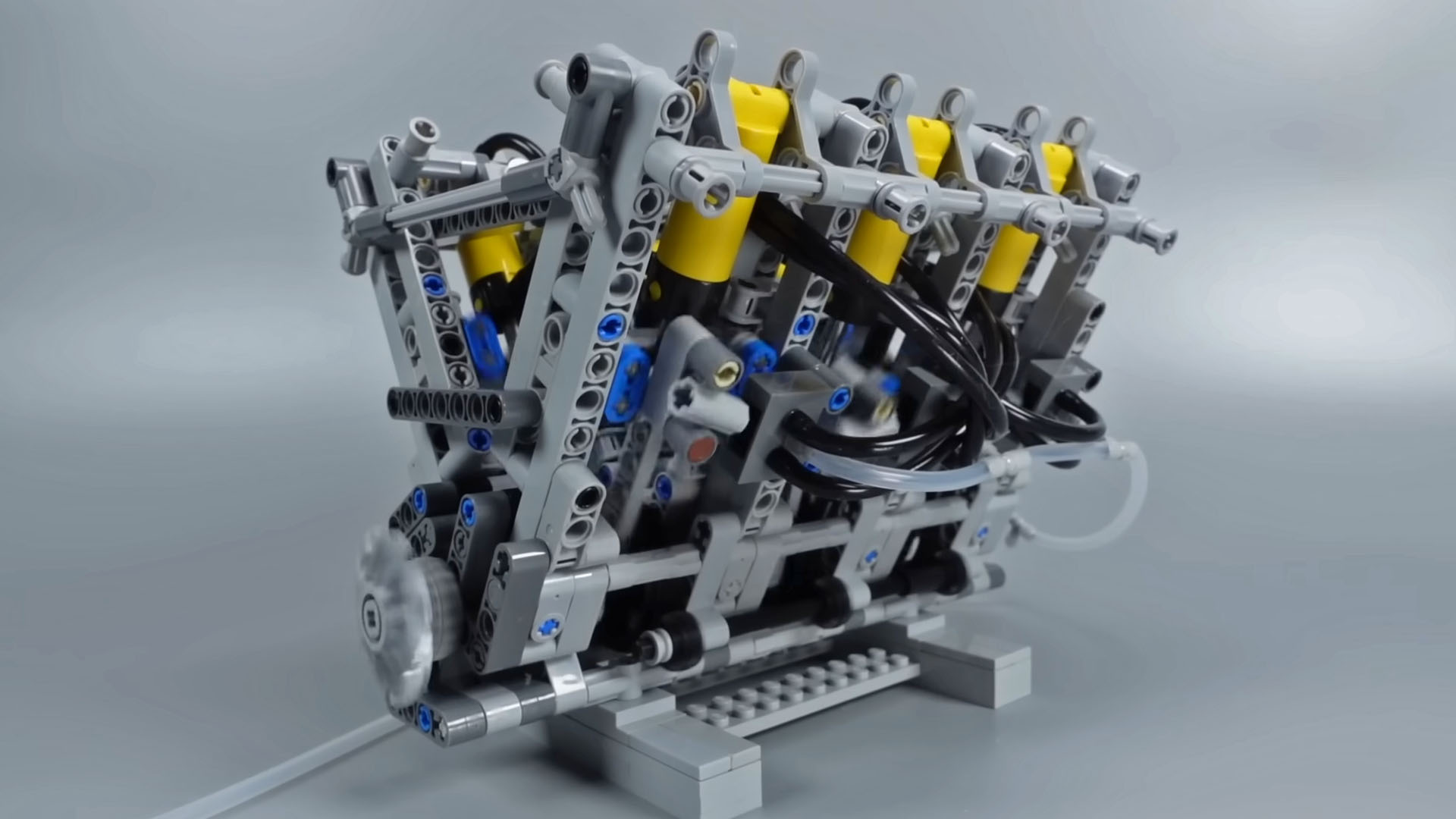

There’s just something special, accessible, and enjoyable about car stuff made from Legos. Whether they’re transmissions, suspension systems, or other mechanical goodness, it’s fascinating to see the complex world around us presented—fully functional—on a tabletop. Engines are a classic Lego project, and one of the many great plastic brick-related channels on YouTube, Brick Technology, just shared some great examples.
The engines they built aren’t the four-stroke poppet-valve types you’re used to seeing in most cars. They’re one-stroke air-powered engines. Similar to many steam engines, each stroke—up or down—is a power stroke. That makes them pretty dissimilar to automotive engines but still very cool to see and even listen to.
Brick Technology tries out several configurations, testing the limits of Lego construction. They start with a single-cylinder engine, do a little airflow work on it to increase its performance, and then move on to other configurations. Two-cylinders, a three-cylinder, and more are tested out. The experiments culminate with a V8 and a 12-cylinder radial.
You can see all the builds below:

Some of the engines don’t have crankshafts like their four-stroke counterparts. Without having to manage various power strokes which don’t happen every revolution for every cylinder, the cranks are simply optimized for even firing above all other considerations. As such, the V8 has a funky 135-degree bank angle and the four-cylinder has a cross-plane crankshaft, although not the sort typically associated with V8 engines. The V6 is the most conventional-looking and operating.
As well as just running the engine, Brick Technology uses torque-limiting gears to see how much grunt each motor has. They also use one of the engines to spin an electric motor and generate a small amount of power. Unfortunately, while there is a known torque associated with the former tests, no rpm is provided. That means we can’t calculate the precise amount of power the tiny engines produce. Hooking a voltmeter to the electric motor for the latter experiments might’ve told us an approximate output, however.
Whether or not we know how much power they make, though, they’re a great project. Now I just want to see more of these engines in every possible configuration.
Got a tip or question for the author? You can reach them here: peter@thedrive.com